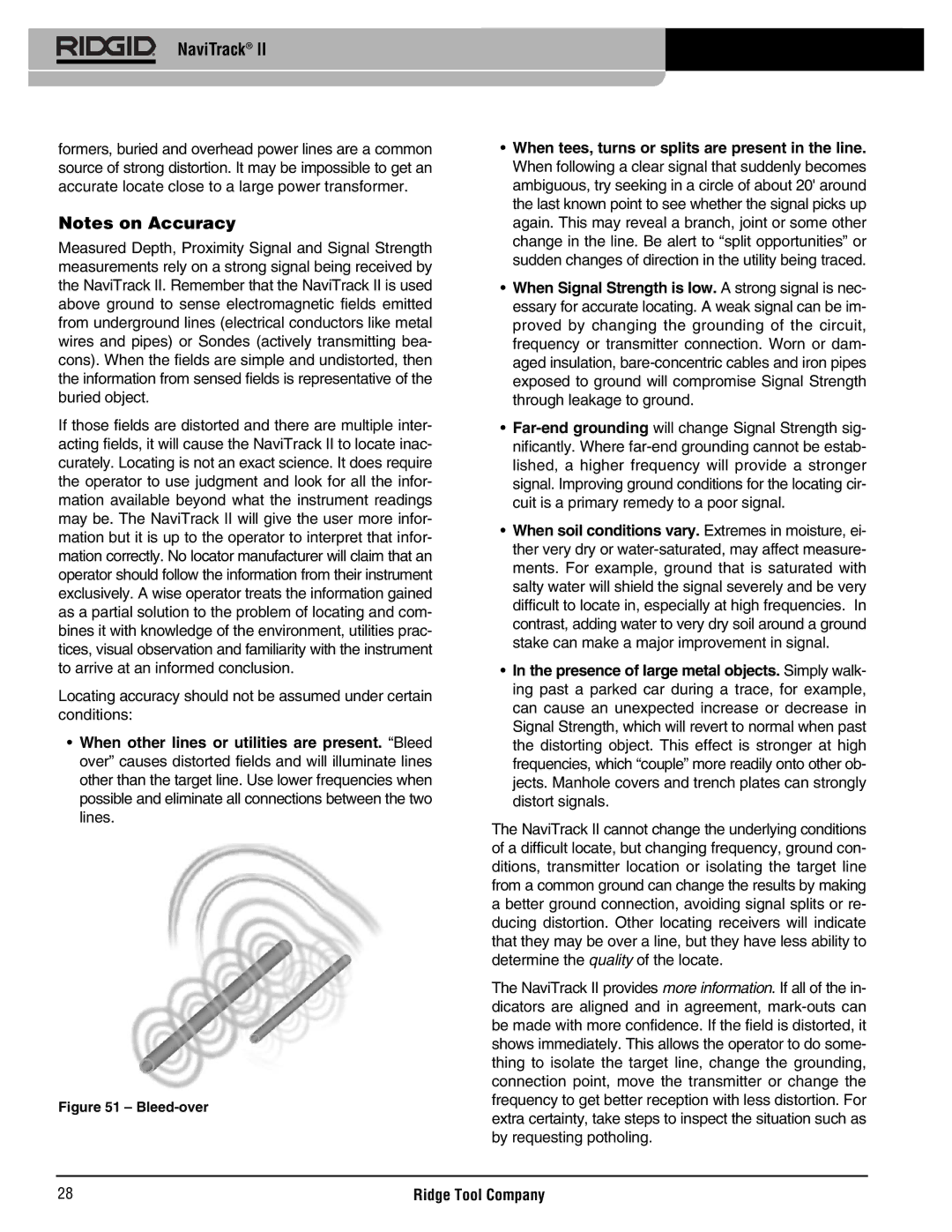
NaviTrack® II
formers, buried and overhead power lines are a common source of strong distortion. It may be impossible to get an accurate locate close to a large power transformer.
Notes on Accuracy
Measured Depth, Proximity Signal and Signal Strength measurements rely on a strong signal being received by the NaviTrack II. Remember that the NaviTrack II is used above ground to sense electromagnetic fields emitted from underground lines (electrical conductors like metal wires and pipes) or Sondes (actively transmitting bea- cons). When the fields are simple and undistorted, then the information from sensed fields is representative of the buried object.
If those fields are distorted and there are multiple inter- acting fields, it will cause the NaviTrack II to locate inac- curately. Locating is not an exact science. It does require the operator to use judgment and look for all the infor- mation available beyond what the instrument readings may be. The NaviTrack II will give the user more infor- mation but it is up to the operator to interpret that infor- mation correctly. No locator manufacturer will claim that an operator should follow the information from their instrument exclusively. A wise operator treats the information gained as a partial solution to the problem of locating and com- bines it with knowledge of the environment, utilities prac- tices, visual observation and familiarity with the instrument to arrive at an informed conclusion.
Locating accuracy should not be assumed under certain conditions:
•When other lines or utilities are present. “Bleed over” causes distorted fields and will illuminate lines other than the target line. Use lower frequencies when possible and eliminate all connections between the two lines.
Figure 51 – Bleed-over
•When tees, turns or splits are present in the line. When following a clear signal that suddenly becomes ambiguous, try seeking in a circle of about 20' around the last known point to see whether the signal picks up again. This may reveal a branch, joint or some other change in the line. Be alert to “split opportunities” or sudden changes of direction in the utility being traced.
•When Signal Strength is low. A strong signal is nec- essary for accurate locating. A weak signal can be im- proved by changing the grounding of the circuit, frequency or transmitter connection. Worn or dam- aged insulation,
•
•When soil conditions vary. Extremes in moisture, ei- ther very dry or
•In the presence of large metal objects. Simply walk- ing past a parked car during a trace, for example, can cause an unexpected increase or decrease in Signal Strength, which will revert to normal when past the distorting object. This effect is stronger at high frequencies, which “couple” more readily onto other ob- jects. Manhole covers and trench plates can strongly distort signals.
The NaviTrack II cannot change the underlying conditions of a difficult locate, but changing frequency, ground con- ditions, transmitter location or isolating the target line from a common ground can change the results by making a better ground connection, avoiding signal splits or re- ducing distortion. Other locating receivers will indicate that they may be over a line, but they have less ability to determine the quality of the locate.
The NaviTrack II provides more information. If all of the in- dicators are aligned and in agreement,
28 | Ridge Tool Company |
